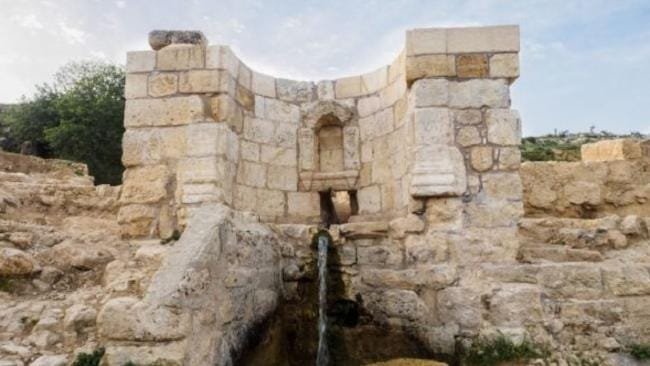– 1500 year-old Mysterious pool discovered at Ein Hanniya Park
– Ein Hanniya Park boast of networks of pool discovered around 2012 and 2016
– Ein Hanniya Park is the site where St.Philip baptized the Ethiopian Eunuch
 A large 1500-year-old pool and elaborate fountain at the site of an ancient church near Jerusalem have been discovered by archaeologists in Isreal. The pool is believed to be part of a system of pools unearthed at Ein Hanniya Park between 2012 and 2016, which is the site where the Ethiopian eunuch was baptised by St.Philip, as described in Acts 8:26—40.
A large 1500-year-old pool and elaborate fountain at the site of an ancient church near Jerusalem have been discovered by archaeologists in Isreal. The pool is believed to be part of a system of pools unearthed at Ein Hanniya Park between 2012 and 2016, which is the site where the Ethiopian eunuch was baptised by St.Philip, as described in Acts 8:26—40.
Built during the Byzantine era, the pools date back to between the 4th and 6th centuries AD, according to the Israel Antiquities Authority.
Other artifacts found at the site include a rare silver coin from the 4th century BC and an ancient capital, or part of a pillar. Experts say that the capital is typical of royal structures found the First Temple period between 960BC and 586BC
The site’s large pool, in particular, is generating plenty of buzz. Experts worked to restore the ancient water systems, which are now functioning again.
“The most significant finding in the excavation is a large and impressive pool from the Byzantine period,” explained Irina Zilberbod, the excavation director for the Israel Antiquities Authority.
“We believe that some Early Christian commentators identified Ein Hanniya as the site where the Ethiopian eunuch was baptised, as described in Acts 8:26—40,” said Jerusalem District Archaeologist Dr Yuval Baruch, in a statement.
“The baptism of the eunuch by St Philip was one of the key events in the spread of Christianity. Therefore, identifying the place where it occurred occupied scholars for many generations and became a common motif in Christian art.”







